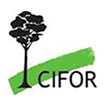The fires raging across Indonesia, and the hazardous smoke they create, are causing even greater damage to the environment, wildlife and communities than first imagined. While much of the recent focus has been on Sumatra—and the spillover into Singapore and Malaysia—the province of Central Kalimantan, on the island of Borneo, faces a greater crisis.
Once called the “lungs of the world”, the rainforests and peatlands of Borneo are struggling to breathe, as they spew vast quantities of smoke into the air, amid some of the worst fires in almost 20 years. Despite major efforts to douse the flames, in this dry El Niño year, there is no telling when the fires will subside and the air will clear.
The causes of the fires are many and complex. Researchers analyzing socioeconomic and political causes and biophysical impacts say that long-term solutions and prevention require a clear strategy, with buy-in from all those involved.
And that’s where science and robust data come in.
“It’s really important for countries in general to be able to measure what’s happening,” said Louis Verchot, Director of Forests and Environment at the Center for International Forestry Research (CIFOR).
“If you can’t assess the impact, you don’t know how big of a problem you have.”
MEASURING THE IMPACT
Verchot is one of 10 scientists who traveled to the provincial capital, Palangka Raya, in mid-October for a workshop with local partners, led by CIFOR’s Daniel Murdiyarso.
“We are running the training with colleagues here in Palangka Raya University, with the Forest Management Unit and also the research center here,” said Murdiyarso.
I can certainly say this is the worst situation I’ve ever encountered for biomass burning.
“We expect that the knowledge—the technical issues, how to assess this situation—is also built here. And in the long term, these experts can continue working with us.”
Students in the workshop learned how to measure the impact of the fires on the atmosphere. The scientists brought specialized equipment that does everything from measuring peat thickness and changes in surface elevation, to quantifying the components of the smoke and gas, to taking thermal images of the landscape from the air.
“I am optimistic that the data, if it is proven to be highly accurate, can support policies related to environmental management in Central Kalimantan,” said Hendrik Segah, a researcher in environmental resources and remote sensing at Palangka Raya University in Central Kalimantan.
“For example, data that shows the real levels of CO2, methane gas and other particles—it really helps the government to have the latest information to help deal with extraordinary events such as what we’re seeing right now.”
EVERY BREATH YOU TAKE
As part of the workshop, the team measured the levels of gas and smoke particles in the air—including those that can get into the human respiratory system when inhaled—to understand the severity of the impacts on human health.
“There is a complete envelopment of smoke all over the place,” said Martin Wooster, Professor of Earth Observation Science at King’s College London and National Centre for Earth Observation (NCEO).
“And if you’re here without a mask, you are breathing much of that smoke into your lungs, which is obviously, I would say, extremely hazardous for your health.”
The names of just some of the noxious components of the smoke are enough to show why: ozone, carbon monoxide, cyanide, ammonia and formaldehyde.
What’s clear is that the economic impact of fires ... is going to far outweigh the benefits of expanding agricultural land.
The effects of any smoke on human health are well documented: headaches, dizziness, fatigue bronchitis, asthma, pneumonia, and cardiovascular disease. In Central Kalimantan, however, the full extent of long-term smoke inhalation on local people remains unknown. But given the levels of toxic gases measured during the workshop, researchers fear the effects of the fires may be far worse than they had anticipated.
“I’ve visited quite a few sites of biomass burning during my 10 years or so of research in the area. And I can certainly say this is the worst situation I’ve ever encountered for biomass burning or any form of combustion in a natural environment,” Wooster said.
“Here you’ve got the actual soils that are burning alongside the vegetation on top, which is often seen in ferns and things that are quite flammable, not the original forest.”
Wooster said that, normally, carbon monoxide measurements register under one part per million (ppm). In Central Kalimantan, however, he measured 30 ppm—and that was inside the hotel where the workshop was being held, more than five kilometers from the nearest fire.
Ultimately, said Verchot, the problem is one of human design and technology alone cannot fix it. Science’s role is to use hard data to spur society and policymakers into action—to begin to deal with the problem at its roots, he added.
“But I think what’s clear is that the economic impact of fires—when you take into account the health impacts, when you take into the account the impacts on biodiversity, when you take into account the impacts on the land—are going to far outweigh the benefits of expanding agricultural land,” Verchot said.
“And that’s, I think, the message we can help tell.”
We want you to share Forests News content, which is licensed under Creative Commons Attribution-NonCommercial-ShareAlike 4.0 International (CC BY-NC-SA 4.0). This means you are free to redistribute our material for non-commercial purposes. All we ask is that you give Forests News appropriate credit and link to the original Forests News content, indicate if changes were made, and distribute your contributions under the same Creative Commons license. You must notify Forests News if you repost, reprint or reuse our materials by contacting forestsnews@cifor-icraf.org.














